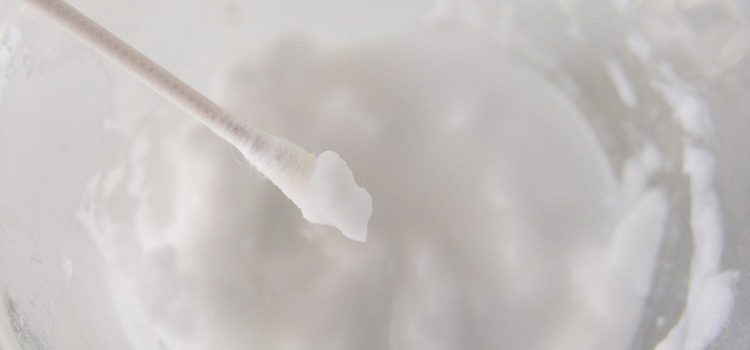
If you’ve had poison ivy before — or are suffering from it right now — you know that the itching and burning are often all you can think about. Antihistamines and steroid creams can certainly help, especially in severe cases. But often, home remedies either complement these therapies or take care of the misery altogether. Their effectiveness is especially welcome when you need immediate relief and can’t get to the drug store or to your doctor.
Home Remedies for Poison Ivy
The best results vary by what stage of poison ivy exposure you are in. If you have yet to show any symptoms but you think you may have had contact, the treatment is different then after the rash and blisters begin to appear.
Early Intervention
When you’ve knowingly come into contact with the poison ivy, your first home remedy efforts should be focused on preventing the spread of urushiol, the volatile oil that causes the misery associated with poison ivy. Removing these oils before they penetrate deeply into your skin does much to minimize your suffering.
Soap and Water

Perhaps the simplest of all home remedies for poison ivy, washing with soap and water within 30 to 60 minutes of poison ivy contact may stop the spread of the urushiol oils. Scrub your hands first, including fingernails, then get to work on other parts of your exposed skin. After you’ve disrobed and tossed your clothes in the washing machine, wash again a few more times. Everything you can do within that first hour will go a long way toward mitigating your poison ivy reaction. 1
Cool water — and lots of it — is best because heat allows the volatile oils penetrate your skin more quickly. Even if you don’t recall touching your hair or other body parts after contact, wash your entire body to remove all doubt. Needless to say, pets and kids should also be bathed, as should tools and other possibly exposed items. 2
Rubbing Alcohol

Rubbing alcohol and cotton balls, or pre-moistened alcohol wipes can also help stop the spread of poison ivy oils after exposure. Rub the moistened cotton balls or wipes all over your exposed areas, then rinse with cool water. Rubbing alcohol is also ideal for cleaning off gardening shears, rubber boots, and other gardening equipment that may have come into contact with the noxious plant. (Be careful with the alcohol around children or pets, who may be sensitive to it or tempted to drink it.) 3
Easing Your Itching
Once the actual onset of poison ivy begins, the most notorious symptom is, of course, intense itching, There are some basic home treatments that will help calm the worst of your desire to scratch. (Your mother was right, by the way — too much scratching can result in permanent scars, so the more you can do to keep that maddening sensation at bay, the better.)
Cool Compresses

It might seem too obvious to qualify as a “home remedy,” but a damp washcloth can be your best friend during the worst of the outbreak. Run the clean cloth under cold water, wring it out, and press it over the itchy areas. Keep a stack of clean cloths handy, because you don’t want to re-infect yourself by using yesterday’s compress on today’s itch. 4
Oatmeal Bath

Oatmeal is famous for its ability to ease itching and redness from poison ivy and other dermatological issues. Your doctor may recommend “colloidal oatmeal,” which is sold at drugstores rather than in your grocer’s cereal section. Yet this type of oatmeal is merely a version that has merely been processed into such a super-fine texture that it’s better for medicinal purposes than for breakfast food. You can make your own home treatment with regular oatmeal. Use the non-instant, unflavored kind, and process it in your blender until it resembles flour. Add about ½ cup of the finely-ground oatmeal to a lukewarm bath. 5
Baking Soda Paste

Using baking soda’s famous neutralizing powers to take the sting out of your rash is great for smaller poison ivy rashes — and when you don’t have time to take another oatmeal bath. Mix a few spoonfuls of baking soda with enough water to form a paste, then smear it over your rash and let it dry. This can be rinsed off and reapplied as often as you need to.
Healing Those Blisters
Helping to dry out your blistered skin will not only soothe itching, but also minimize the risk of infection that happens when blisters get re-opened through friction and exposed to bacteria.
Milk Compress

Whole-fat milk not only soothes irritated skin but helps speed up the healing of poison ivy blisters by lubricating the skin. Instead of a plain cold water compress, soak a clean cloth in cold milk, and leave it on your rash for at least 15 minutes, several times a day. 6
Epsom Salt Treatment

Not surprisingly, salt is just the ticket for drying out blisters. Soak in a bath to which you’ve added about 1 cup of the salt crystals, which are widely available in drug stores and other shops. Let the bath cool slightly to avoid irritating your rash, then get in and immerse yourself for at least 15 minutes.7
Sources
- Diseases and Conditions: Poison Ivy Rash http://www.mayo.edu/diseases-conditions/poison-ivy/ ↩
- Poison Ivy, Oak, and Sumac http://www.loyno.edu/lucec/natural-history-writings/poison-ivy-oak-and-sumac-0 ↩
- Poison ivy, oak, and sumac http://goaskalice.columbia.edu/answered-questions/poison-ivy-oak-and-sumac ↩
- Treating poison ivy: Ease the itch with tips from dermatologists https://www.aad.org/media/news-releases/treating-poison-ivy-ease-the-itch-with-tips-from-dermatologists ↩
- Make Your Own Colloidal Oatmeal http://colloidaloatmeal.com/make_your_own_colloidal_oatmeal/ ↩
- How to Spot and Treat Poison Ivy and Poison Oak https://uknow.uky.edu/uk-healthcare/how-spot-and-treat-poison-ivy-and-poison-oak ↩
- HOME REMEDIES: Poison Ivy and Oak Treatment https://newengland.com/today/living/home-remedies/poison-ivy-cure/ ↩
